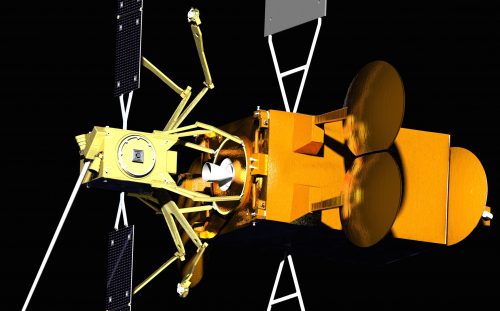Effective Space signed an agreement with THE S The American to launch two satellites into space SPACE DRONE of the company. Date: 2020. esatellitesWe maneuvered towards the client's communication satellites, which ran out of fuel in space, would attach to them and gain control over maintaining their position and movement in orbit. This will significantly extend the life span and regular activity of the expensive communication satellites. The company plans after the first launch to expand the "fleet" of satellites in its possession and launch up to 6 satellites into space per year.

Effective Space, one of the pioneers in the field of space operations services, signed an agreement with the American ILS (International Launch Services), one of the world's leading suppliers of commercial launches into space, to launch two Effective Space SPACE DRONE™ satellites directly into orbit in space.
The launch, planned for 2020, will be carried out using the Proton Breeze M launcher, from the Baikonur Cosmodrome launch site in Kazakhstan. The company plans after the first launch to expand the "fleet" of satellites in its possession and launch up to 6 additional satellites into space each year. In the following stages, the satellites will also be launched for low-orbit satellite support missions (height up to 2,000 kilometers), space debris disposal and other logistical missions in space.
The launcher will put the two Effective Space satellites into geostationary orbit (a height of 35,786 km above the Earth's equator) and from there the satellites, using their electric propulsion engines, will maneuver their way towards their mission: attaching to communication satellites that have run out of fuel, and taking control of keeping The position and movement of the satellites in orbit. In doing so, the company will significantly extend the life span and regular activity of the expensive communication satellites. This type of service in space has not been provided by any other company to date.

The SPACE DRONE satellite weighs about 400 kg and is the size of a washing machine. It includes a non-invasive anchoring system, which allows it to connect to almost any of the communication satellites currently in orbit. The SPACE DRONE™ satellite extends the life of the communication satellites by being used as an external propulsion system, thereby allowing the satellite operator to extend the life of the satellite it owns for several more years, providing it with significant economic value. The satellite is built for repeated use, so that it can perform several service tasks within its life span, which is estimated to be approximately 15 years of operation.
In January 2018, Effective Space signed a contract in the amount of over 100 million dollars with an international satellite operator to extend the life span and regular operation of the client's communication satellites. "Launching our first two satellites directly into orbit is part of our strong commitment to our first customer, to meeting the schedules and ensuring the life extension service for his satellites," says Aryeh Halzband, founder and CEO of Effective Space. "Extending the duration of the activity of 'assets' located in space is gaining momentum today, especially in light of the current economy. The announcement of the conclusion of the launch agreement is an important milestone in the realization of this vision.'
The Proton Breeze M launcher has been launched into space 416 times since 1965. Under ILS, 96 space missions have already been carried out since the launch of the Astra 1F communications satellite in 1996.
See more on the subject on the science website:
